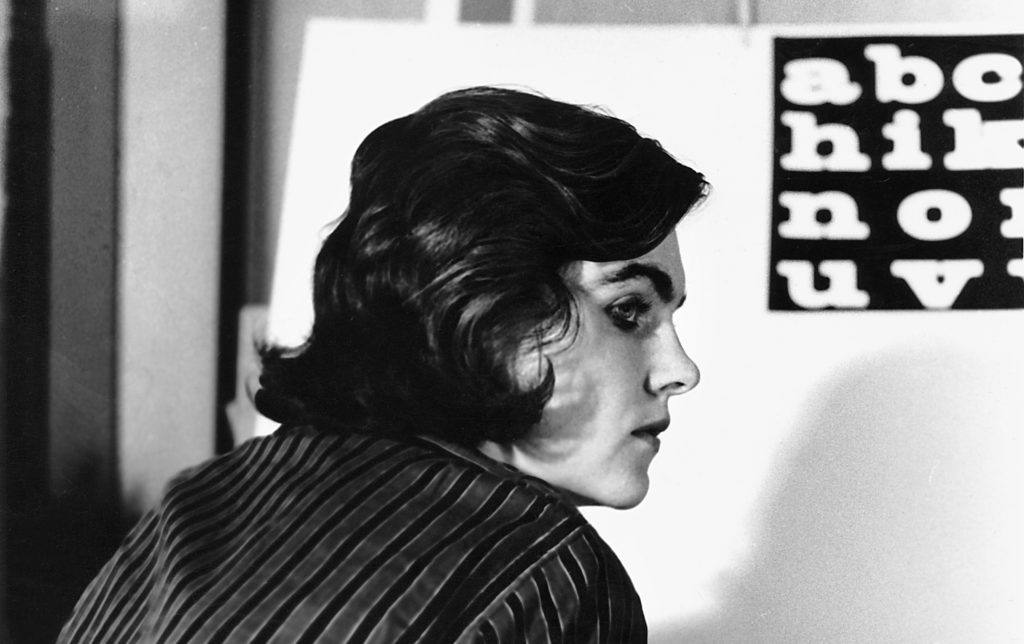The striking thing about Doom (2016), a game in which the player enters a portal to hell and rips demons in half with an increasingly ridiculous arsenal, is the level of subtlety and care evident in its design. Doom is the dictionary definition of over-the-top, metal, and gruesome, but I’ve played few other games that even come close to matching its buttery smooth difficulty curve and firm sense of place. Resurrected by a sinister corporation that’s solved the energy crisis by harvesting the power of hell, the main character wanders corridors of abandoned space outposts, finding everywhere scenes of capitalism taken to its logical extreme: pentagrams scrawled on the walls, holograms cheerily pledging company dogmatism, ambiguous hunks of meat hanging from the ceiling. Level by level, the game slowly stirs in more chaos, ensuring that the player is always equipped to deal with enemy encounters—but only insofar as the player survives. Comfort is elusive, perpetually just out of reach. Never did I lose the rush of fear I’d feel when I saw a hell knight charging me from across the map, nor did I escape the jumpy, amphetamine-like rush of landing in a new arena filled with horrible creatures. Doom is loud, but necessarily so; it’s refreshing to find a work so thoroughly committed to raising the hair on one’s neck. —Brian Ransom
One year later and I’m still thinking about Kai Cheng Thom’s Fierce Femmes and Notorious Liars. I was especially taken with the poems scattered throughout, the following lines in particular: “so silly to think / that i could ever leave you / behind, little razor smile, / so stupid to believe / that i would grow up / and away / from needing you.” Here, Thom perfectly articulates the feeling of overextending oneself. And throughout the story, we feel the narrator’s shame that she is a person capable only of inflicting harm, that she is not “grown” enough yet and is “stupid” for ever thinking she was. I want her to find a way out (and I do think the story offers some answers), but I value the book’s unremitting representation of anxiety. Fierce Femmes is thrilling, fabulous, inventive, but as Jordy Rosenberg once described it, “not everything is available for unreality.” Anxiety and shame are a straining and terrifying part of her experience, but they are also markers of being alive. —Spencer Quong

Lucia Berlin. Albuquerque, New Mexico, 1956. Photo: Paul Suttman (©2018 Literary Estate of Lucia Berlin LP).
I worked open the stiff binding on a hardcover copy of Evening in Paradise fully prepped by the handful of appetite-whetting reviews I had read. Lucia Berlin’s honest, unpretentious characters offer a refreshing alternative to the metropolitan cachet I’ve come to expect in the figure of the “modern woman.” Her protagonists aren’t seeking to cast away society’s stricture in favor of messiness but rather seem to have been born running from mess; they are tussled in spite of their tireless effort to present as polished women. I could imagine them vividly, with their cigarettes and the failed marriages of their youth, navigating without a map what it means to be a woman, a mother, a wife. I was delighted and surprised by how unafraid Berlin is to slip into bawdy territory and how well she sets that humor against elegant storytelling; Berlin elevates the search for stability from its obscure, forgotten place in midcentury rural American women and transforms it into a quest for selfhood worthy of artful consideration. In doing so, she introduces us to a forgotten Bohemia. —Lauren Kane
Next time you’re in Pittsburgh, the city of, to quote Helen DeWitt, “these dozens of little suspension bridges which you have to love,” check out the Frick Car and Carriage Museum. To enter the Frick mansion, where the robber baron and his family lived for almost thirty years before he split with Carnegie and decamped to Fifth Avenue, you must sign up for a tour in advance, or it’ll be booked solid—but next door the Car and Carriage Museum is free of charge and wide open to the visitor who “plays it by ear.” Inside, the early automobiles wear their genetic kinship to carriages and bicycles on their sleeves, the way early film does with theater (stage makeup, painted sets). In the current exhibition, ancestors and scions mingle, and the vibe is like a dealership showroom in the afterlife. A spindly Gothic “horseless carriage” with lanterns for headlights is across from a Jules Verne–esque steam-powered car, the Stanley, created by the identical Stanley twins. A bobsled—which isn’t the tube that I associate with the word but a wide wooden sleigh, sans reindeer—is just a hat’s toss from the three-wheeled Model A Runabout and an electric car, the Stanhope, which purred around, fumeless, in 1903. The future was here, “just not very evenly distributed”—which begs the question: do attractive, inventive machines need to be so expensive that the only people who can afford them are the kind of people who are responsible for the Homestead Strike? The glory of these machines is in the certainty of their lines: sharp or round, not perpetually in between. Look out across any parking lot in America. Is it impossible to create a car that is affordable and safe that doesn’t look like a bar of soap everyone has already used? —Brent Katz
Are women capable of writing fiction? From the kinds of questions you sometimes hear at readings, you wouldn’t think so. Enter Sophie Collins’s Who Is Mary Sue?, which combines lyric essays and poetic fragments to explore the idea of female creativity, the narrative I, and the border between truth and fiction. Drawing her title from the concept of the Mary Sue, that tacky authorial stand-in found in the world of fan fiction, Collins questions the identity of the female artist through poems about twinhood and Story of O, and with quotes from Rachel Cusk, Jamaica Kincaid, Joanna Russ, and more. It’s at once thoughtful and thought-provoking—though I read it over the holiday break, I’m still reeling a week later. —Rhian Sasseen
from The Paris Review http://bit.ly/2LRSPr7


Comments
Post a Comment